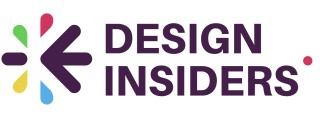
The Importance of Market Segmentation in B2B Design
The Relevance of Market Segmentation in B2B Design Context
In the realm of B2B design, segmentation serves as a pivotal component of a successful marketing strategy. It helps businesses understand their diverse customer bases, thereby enabling them to tailor their products and services more effectively. By focusing on specific segments, companies can address distinct customer needs and pain points, resulting in more personalized marketing campaigns and improved decision-making.
Market segmentation in the B2B sector is not a one-size-fits-all approach. It requires a nuanced understanding of decision makers, their preferences, and the factors that influence their purchasing behavior. For example, a product or service that appeals to a segment within the tech industry may not resonate with those in the healthcare sector. Thus, businesses must utilize data-driven analysis to identify target markets and adjust their sales and marketing strategies accordingly.
By implementing demographic segmentation, behavioral segmentation, and firmographic segmentation, businesses can gather insights into their markets and create segments based on characteristics like company size, industry, and purchasing behavior. This segmentation not only aids in crafting bespoke marketing messages but also enhances the efficiency of sales efforts by focusing on high-potential customers.
Ultimately, the importance of market segmentation in B2B design lies in its ability to foster more engaging and relevant customer experiences. It allows companies to develop a strategic approach, refining their target market criteria and focusing resources on segments that promise the highest return on investment.
Identifying Key Segmentation Criteria
Pinpointing Essential Criteria for Effective Customer Segmentation
In the realm of B2B design, identifying key segmentation criteria is crucial for a robust marketing strategy. Differentiating market segments based on specific criteria allows businesses to tailor their products and marketing campaigns to meet the exact needs of their target audience. Here, we delve into the essential aspects that businesses should consider when segmenting their B2B markets.- Firmographic Segmentation: This involves categorizing companies based on characteristics such as industry, company size, or sales revenue. Such data is valuable in understanding the landscape of potential customers and crafting strategies aligned with { result: 'shared organizational needs. For example, targeting firms with more than 100 employees in the tech industry could help a design firm focus its efforts on creating solutions that address specific technological pain points.'}.
- Behavioral Segmentation: Understanding how different businesses behave is another criterion. By analyzing purchasing patterns, product usage, or loyalty metrics, companies can segment customers based on their interactions with products or services. This approach improves decision making by anticipating customer needs and offering tailored design solutions.
- Demographic Segmentation: B2B markets can also segment customers based on demographic characteristics of decision makers within these companies, such as age, gender, or education level. Although often used in B2C segmentation, demographic data can reveal insights into the preferences of those spearheading business decisions.
- Pain Point Analysis: By addressing the specific challenges or "pain points" of a company, businesses can segment their market effectively. Designing a product or service that solves a particular problem can foster a more profound connection, driving not only sales but also customer loyalty.
Challenges in B2B Market Segmentation for Design
Overcoming the Intricacies of Seamless Diving into B2B Segmentation
When delving into the intricacies of B2B market segmentation within design, businesses frequently encounter a set of unique challenges. These challenges can affect the effectiveness of their marketing strategies and the success of their customer segmentation efforts. Let’s explore some of these key hurdles. One major obstacle arises from the complexity of data collection and analysis. Many companies struggle with obtaining accurate and actionable data, which forms the foundation of segmentation. Unlike B2C markets, where demographic segmentation can often suffice, B2B markets require a more nuanced approach. For instance, firmographic segmentation must be complemented by behavioral segmentation to truly tap into the inner workings of a target market. Furthermore, there is the challenge of identifying the specific pain points of decision makers within a target market. In B2B markets, the decision-making process usually involves multiple stakeholders with diverse priorities, making it imperative for businesses to understand these dynamics. This often leads to a catch-22 situation where a segment that seems viable on the surface does not meet the holistic needs of the involved parties. Another challenge regularly faced by companies is distinguishing between similar market segments. As businesses evolve, market segments may begin to overlap, which can create confusion in both customer targeting and product offerings. It becomes crucial for companies to have clear differentiation strategies and precise communication to maintain distinctiveness in their product service offerings. Moreover, segmentation market strategies must be adaptable to fluctuating market conditions. Businesses need to be agile to respond to shifts in customer preferences and technological advancements to avoid obsolescence. This adaptability is essential for maintaining relevance and ensuring a competitive edge. Lastly, while aligning sales marketing strategies to support segmentation efforts, companies find that ensuring consistent communication and delivery across various segments can be daunting. Misalignment could lead to marketing campaigns that fail to resonate with the target audience, undermining the entire initiative. Successfully addressing these challenges requires strategic thinking and a thorough understanding of the market landscape. For more insight, exploring exceptional B2B segmentation strategies could provide useful guidance.Strategies for Effective B2B Segmentation
Tailoring Approaches to Achieve Effective Market Segmentation
In the rapidly evolving domain of B2B design, understanding customer needs at a granular level is paramount. This involves delving into the intricacies of segmentation to ensure that marketing strategies are not only relevant but also resonate with the target audience. Strategies for effective segmentation can shape the future of sales and marketing, tailoring approaches that speak directly to specific market segments. Firstly, understanding the customer is crucial. Companies must identify how demographic segmentation can help personalize their approach. For instance, understanding the age, gender, and income level of a customer segment can lead to more tailored products and services. Alongside this, firmographic segmentation focuses on businesses using criteria like industry, location, and company size, enabling segmentation market that aligns with companies' long-term goals. Next, behavioral segmentation examines customer behaviors, allowing businesses to cater to purchasing patterns and product usage. By analyzing this data, companies can fine-tune their marketing campaigns and develop products that meet specific pain points. Furthermore, personalizing customer segmentation enhances decision making. By addressing the unique preferences and requirements of customers based on their behavioral and firmographic characteristics, businesses can execute marketing strategies that directly influence decision makers, ensuring effective communication between marketers and their target markets. Finally, in the B2B design context, even the minutest detail can drive a substantial impact. For example, leveraging data to understand how different segments interact with products can assist marketers in developing personalized marketing strategies. This not only fosters better engagement but also strengthens the relationship between a company and its customers, ensuring sustained growth. Adjusting these strategies based on emerging trends and continuous learning from successful case studies ensures businesses stay ahead of the curve in market segmentation—molding marketing strategies that fulfill both current and future customer needs.Case Studies: Successful B2B Segmentation in Design
Real World Examples of Successful B2B Segmentation
When delving into the field of B2B segmentation in design, numerous examples illustrate effective strategies. Companies that have effectively segmented their markets not only understand their customers' unique needs but also leverage this understanding to drive success. Here are some notable instances:- Technology Provider with Firmographic and Behavioral Segmentation: A leading tech firm redefined their segmentation approach by integrating firmographic segmentation with behavioral analysis. They categorized their clients not just by industry and company size, but by purchase behaviors and decision-making patterns. This targeted approach refined their marketing strategies, enhancing both their sales marketing and customer relationships.
- Design Consultancy Utilizing Demographic Segmentation: In the design sector, one successful consultancy employs demographic segmentation to better tailor their services. By identifying specific age groups and professional roles within client companies, they customize their products services, addressing unique pain points, which significantly boosted client satisfaction and retention.
- Manufacturing Firm Focused on Target Market Based Segmentation: A manufacturing business identified distinct market segments based on the specific needs of various industry sectors. By developing unique product variations catering to the distinct needs of these segments, they substantially increased market share in several target markets.














